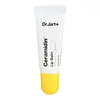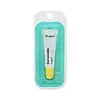What's inside
What's inside
 Key Ingredients
Key Ingredients

 Benefits
Benefits

 Concerns
Concerns

 Ingredients Side-by-side
Ingredients Side-by-side

Phytosteryl/Isostearyl/Cetyl/Stearyl/Behenyl Dimer Dilinoleate
Skin ConditioningDiisostearyl Malate
EmollientPentaerythrityl Tetraethylhexanoate
EmollientHydrogenated Polyisobutene
EmollientPolyglyceryl-2 Isostearate/Dimer Dilinoleate Copolymer
EmollientCeresin
Emulsion StabilisingEthylhexyl Stearate
EmollientTribehenin
EmollientCaprylic/Capric/Myristic/Stearic Triglyceride
EmollientSilica Dimethyl Silylate
EmollientEthylene/Propylene/Styrene Copolymer
Polymethylsilsesquioxane
Vp/Hexadecene Copolymer
Ceramide NP
Skin ConditioningButylene/Ethylene/Styrene Copolymer
Hippophae Rhamnoides Oil
EmollientPentaerythrityl Tetra-Di-T-Butyl Hydroxyhydrocinnamate
AntioxidantDehydroacetic Acid
PreservativePhytosteryl/Isostearyl/Cetyl/Stearyl/Behenyl Dimer Dilinoleate, Diisostearyl Malate, Pentaerythrityl Tetraethylhexanoate, Hydrogenated Polyisobutene, Polyglyceryl-2 Isostearate/Dimer Dilinoleate Copolymer, Ceresin, Ethylhexyl Stearate, Tribehenin, Caprylic/Capric/Myristic/Stearic Triglyceride, Silica Dimethyl Silylate, Ethylene/Propylene/Styrene Copolymer, Polymethylsilsesquioxane, Vp/Hexadecene Copolymer, Ceramide NP, Butylene/Ethylene/Styrene Copolymer, Hippophae Rhamnoides Oil, Pentaerythrityl Tetra-Di-T-Butyl Hydroxyhydrocinnamate, Dehydroacetic Acid
Phytosteryl/Isostearyl/Cetyl/Stearyl/Behenyl Dimer Dilinoleate
Skin ConditioningPentaerythrityl Tetraethylhexanoate
EmollientDiisostearyl Malate
EmollientHydrogenated Polyisobutene
EmollientEthylhexyl Stearate
EmollientCeresin
Emulsion StabilisingMethyl Hydrogenated Rosinate
PerfumingTribehenin
EmollientSilica Dimethyl Silylate
EmollientPolymethylsilsesquioxane
Vp/Hexadecene Copolymer
Ethylene/Propylene/Styrene Copolymer
Butylene/Ethylene/Styrene Copolymer
Ceramide NP
Skin ConditioningCitrus Aurantium Bergamia Fruit Oil
MaskingDehydroacetic Acid
PreservativeHippophae Rhamnoides Oil
EmollientPelargonium Graveolens Flower Oil
MaskingSalvia Officinalis Oil
MaskingPogostemon Cablin Leaf Oil
MaskingWater
Skin ConditioningDipropylene Glycol
HumectantHydrogenated Lecithin
EmulsifyingCetyl-Pg Hydroxyethyl Palmitamide
Skin ConditioningPropanediol
SolventGlyceryl Stearate
EmollientSodium Hyaluronate Crosspolymer
HumectantCeramide Ns
Skin ConditioningHydrolyzed Glycosaminoglycans
HumectantGlycerin
HumectantSodium Hyaluronate
HumectantCeramide AP
Skin ConditioningCeramide As
Skin ConditioningBenzyl Glycol
SolventHydrolyzed Hyaluronic Acid
HumectantCholesterol
EmollientEthylhexylglycerin
Skin ConditioningCeramide EOP
Skin ConditioningHyaluronic Acid
HumectantRaspberry Ketone
MaskingPhytosteryl/Isostearyl/Cetyl/Stearyl/Behenyl Dimer Dilinoleate, Pentaerythrityl Tetraethylhexanoate, Diisostearyl Malate, Hydrogenated Polyisobutene, Ethylhexyl Stearate, Ceresin, Methyl Hydrogenated Rosinate, Tribehenin, Silica Dimethyl Silylate, Polymethylsilsesquioxane, Vp/Hexadecene Copolymer, Ethylene/Propylene/Styrene Copolymer, Butylene/Ethylene/Styrene Copolymer, Ceramide NP, Citrus Aurantium Bergamia Fruit Oil, Dehydroacetic Acid, Hippophae Rhamnoides Oil, Pelargonium Graveolens Flower Oil, Salvia Officinalis Oil, Pogostemon Cablin Leaf Oil, Water, Dipropylene Glycol, Hydrogenated Lecithin, Cetyl-Pg Hydroxyethyl Palmitamide, Propanediol, Glyceryl Stearate, Sodium Hyaluronate Crosspolymer, Ceramide Ns, Hydrolyzed Glycosaminoglycans, Glycerin, Sodium Hyaluronate, Ceramide AP, Ceramide As, Benzyl Glycol, Hydrolyzed Hyaluronic Acid, Cholesterol, Ethylhexylglycerin, Ceramide EOP, Hyaluronic Acid, Raspberry Ketone
 Reviews
Reviews

Ingredients Explained
These ingredients are found in both products.
Ingredients higher up in an ingredient list are typically present in a larger amount.
We don't have a description for Butylene/Ethylene/Styrene Copolymer yet.
Ceramide NP is a type of ceramide and formally known as ceramide 3.
Ceramides are intercellular lipids naturally found in our skin that bonds dead skin cells together to create a barrier. They are known for their ability to hold water and thus are a great ingredient for dry skin.
Ceramides are an important building block for our skin barrier. A stronger barrier helps the skin look more firm and hydrated. By bolstering the skin ceramides act as a barrier against irritating ingredients. This can help with inflammation as well.
If you would like to eat ceramides, sweet potatoes contain a small amount.
Read more about other common types of ceramides here:
Ceramide AP
Ceramide EOP
Ceresin is a wax derived from ozokerite. It is an alternative to beeswax.
The most common process of creating ceresin is by using heat and sulfuric acid.
Dehydroacetic Acid is fungicide and bactericide. It is used as a preservative in cosmetics. Preservatives help elongate the shelf life of a product.
Dehydroacetic Acid is not soluble in water.
Diisostearyl Malate is an emollient and most often used in lip products. It comes from isostearyl alcohol, a fatty acid, and malic acid, an AHA.
As an emollient, Diisostearyl Malate helps create a thin film on your skin to trap moisture in. This helps keep your skin soft and smooth.
We don't have a description for Ethylene/Propylene/Styrene Copolymer yet.
Ethylhexyl Stearate is an ester of 2-ethylhexyl alcohol and stearic acid. It is an emulsifier, emollient, and texture enhancer.
As an emulsifier, it helps prevent ingredients from separating.
Its emollient property helps soften and hydrate the skin. Emollients form a barrier on the skin to trap moisture in.
Learn more about Ethylhexyl StearateHippophae Rhamnoides Oil also known as seabuckthorn oil. This oil is usually extracted from the fruit pulp or seeds.
Seabuckthorn is rich in phytosterols, carotenoids, Vitamins A, C, and E. This gives it strong antioxidant properties that can help soothe and protect your skin from oxidative damage.
This oil is rich in fatty acids, including: two types of linoleic acid (~30-34%), oleic acid (17%), and palmiteic acid (35%). Note these numbers are averages, and different parts of the plant will vary.
Palmitoleic acid has been shown to help soothe inflammation and promote wound healing. It is also naturally found in the fat of our skin.
Overall, seabuckthorn oil is great for nourishing, hydrating, and soothing skin. While it shows UV protecting properties, it should not replace sunscreen.
Due to the rich fatty acid content, this ingredient may not be Malassezia folliculitis, or fungal acne, safe.
Seabuckthorn berries are little orange fruits. This plant is native to Asia.
Learn more about Hippophae Rhamnoides OilHydrogenated Polyisobutene is a synthetic polymer. Polymers are compounds with high molecular weight. Hydrogenated Polyisobutene is an emollient and texture enhancer.
In one study, Hydrogenated Polyisobutene showed better skin hydration levels than Caprylic/Capric Triglyceride. As an emollient, it helps keep your skin soft and hydrated by trapping moisture in.
Hydrogenated Polyisobutene is often used as a mineral oil replacement.
Learn more about Hydrogenated PolyisobutenePentaerythrityl Tetraethylhexanoate is an emollient that helps make your skin smooth and hydrated. It specializes in creating a non-oily and "wet" feeling on skin.
This ingredient comes from isostearic acid, a saturated fatty acid. It is a synthetic ingredient.
We don't have a description for Phytosteryl/Isostearyl/Cetyl/Stearyl/Behenyl Dimer Dilinoleate yet.
Polymethylsilsesquioxane is a silicone used as a film forming agent.
When applied to the skin, this ingredient creates an invisible film on the surface. This film still allows oxygen to pass through, but prevents moisture from escaping. This can help condition and hydrate the skin. It also leaves a silky feel when applied.
Polymethylsilsesquioxane has not been shown to clog pores. It has been deemed safe to use up to 55%, but most cosmetics use much less.
If you have concerns about using this ingredient, we recommend speaking with a professional.
Learn more about PolymethylsilsesquioxaneThis silica is mainly used to thicken oils and suspend particles in oils. It is not water soluble.
According to the manufacturer, it:
The manufacturer also claims this ingredient to be useful in makeup.
In lipstick formulations, this ingredient improves color payoff, reduces pigment settling, and reduces oil bleeding. This ingredient also improves the grip of powder products such as dry shampoos.
Learn more about Silica Dimethyl SilylateTribehenin comes from glycerin and behenic acid.
It is used as an emollient, or moisturizer. Emollients form a thin barrier on skin to prevent moisture from escaping.
This ingredient may not be Malassezia folliculitis, or fungal-acne safe.
Learn more about TribeheninVP/Hexadecene Copolymer is a synthetic film-forming agent. It has both water and oil loving properties, allowing it to create a flexible, even film on the skin.
This ingredient helps enhance texture, smoothness, and wear resistance in makeup products while reducing tackiness.